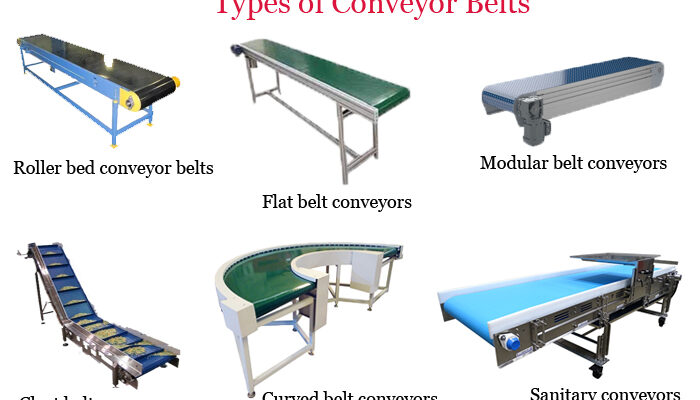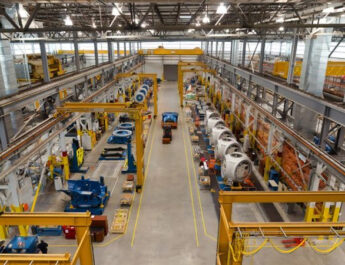Newstricky| This article is written for those who are interested in the industrial world and its many machines, and it seeks to provide a comprehensive overview of the different types of conveyor belts used in manufacturing. The general idea behind this machinery is that they all move objects along a continuous path. They also vary in design depending on their purpose and where they are being utilized. Companies use them to transport materials or goods or create a ballistic pathway, such as moving things like coal or grain around an industrial building. They are also used in manufacturing industries such as woodworking, metalworking, and textile and rubber industries.
The general idea behind the belts is that they all travel across the path of a continuous path, and the number of linear feet will greatly vary depending on their purpose. While there are eight different types of conveyor belts, they can also be classified into three basic types:
Table of Contents
The basic belt
A basic belt conveyor consists of two or more pulleys, one between each shaft of the belt. The belt rotates around the pulleys moving objects at a continuous speed.
The snake belt
The snake belt consists of two belts that run parallel to each other. The belt holds the items in place, making it possible for the belt to move items up vertical inclines up to 90 degrees. Items can be removed from the belt at any point using simple redirection.
The long belt
A long belt conveyor is a system of three drive units that moves materials over long distances, anywhere up to 8 miles. As the conveyor also features rollers, the system can move items through horizontal and vertical curves. The design makes this belt ideal for use in mining operations where vast amounts of ore need to be moved.
The 8 types of conveyor belts and their application
Conveyor belts are used across a wide range of applications. The following descriptions are of generic systems – fluent conveyors provide information on a wide range of belts using combinations of conveyor belt techniques.
Roller bed conveyor belts
Roller bed conveyors are made up of several rollers that support items being moved along the belt. This basic conveyor is ideal for moving items a long distance as the rollers reduce friction.
Application: most often used for packing, sorting, and on assembly lines.
Flat belt conveyors
A flat belt conveyor is a simple form of conveyor system consisting of a belt that is powered by a series of pulleys.
Application: often used in washdown areas and slow assembly lines.
Modular belt conveyors
Instead of using a single roll made up of a single sheet, a modular belt is made up of individual interlocking pieces that create a durable loop. Each interlocking piece can be removed if it becomes damaged, rather than needing to replace the whole belt. The belt is also easy to wash and is more resistant to shape objects.
Application: due to its ease of cleaning, the modular belt is ideal for carrying food items.
Cleat belt conveyors
A cleated belt has vertical cleats set along its length. These cleats make it possible to move loose materials securely.
Application: depending on the cleat style, these belts are used to move small parts, lightweight and medium weight items up an incline, or even heavy and abrasive items.
Curved belt conveyors
Used to carry items around corners, these belts use modular construction and are used where floor space needs to be maximized.
Incline belt conveyors
An incline/decline belt is used where items need to be transferred to a different height. They feature a belt with a rough surface to stop items from slipping.
Application: they can move items to different elevations or enhance a gravity flow system.
Sanitary conveyors
Often used in environments that require products to undergo harsh washing and sterilization.
Application: these belts can carry items in extreme environments such as furnaces or freezers.
Specialty conveyors
Conveyor belts are highly customizable and can support many applications. A specialty belt includes:
- Suction belts that are designed to keep lightweight objects in place
- Magnetic belts to transport items containing iron through equally spaced electromagnets
- Back-lit conveyor belts to aid the quality control
Conveyor belts are more than just simple belts moving items over a path. They can be used in many different applications across many industries. While some are made up of simple horizontal or vertical belts, others are more complex. Their future in manufacturing is fairly safe as they reduce manual labor and improve efficiencies.




